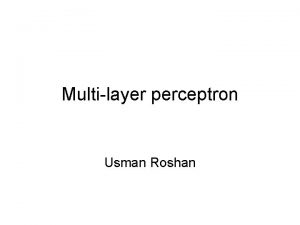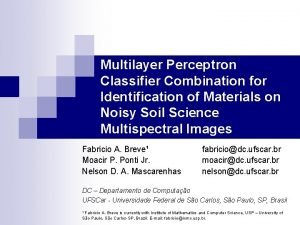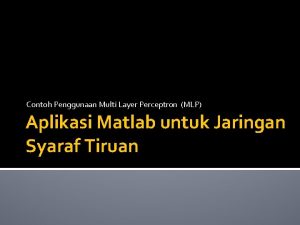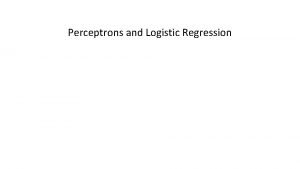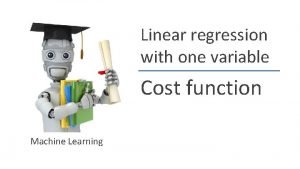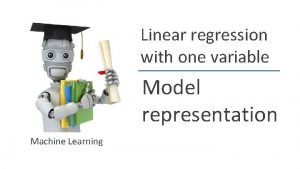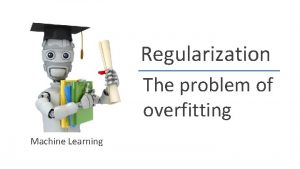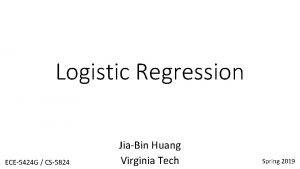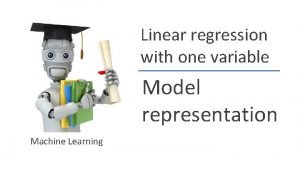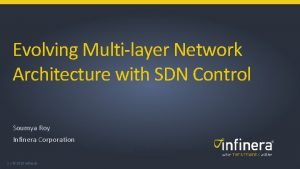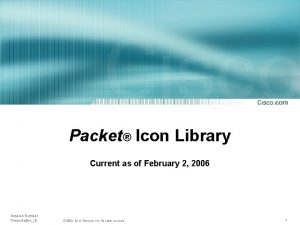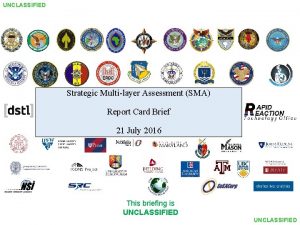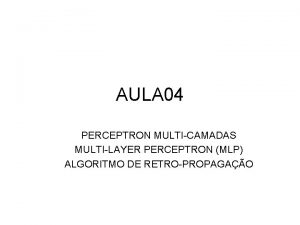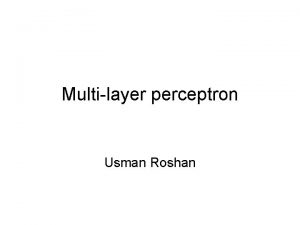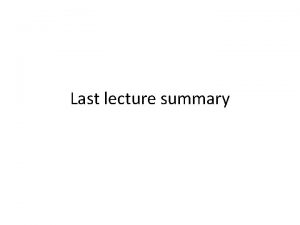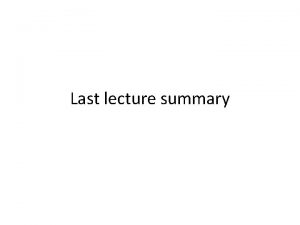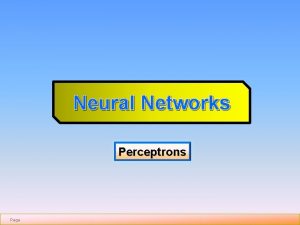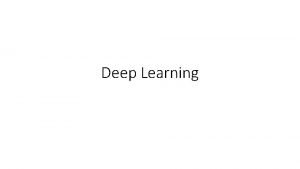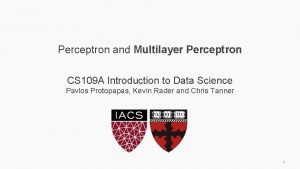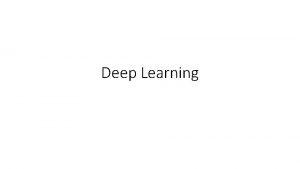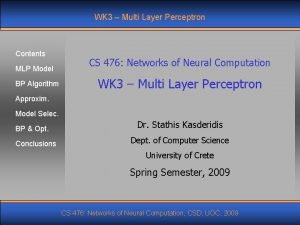Multilayer Perceptron MLP Regression Andrew Marshall Context In

















- Slides: 17

Multilayer Perceptron (MLP) Regression Andrew Marshall

Context • In my project, microstructures are generated, and their 2 point statistics are correlated • Structure-property linkages are developed via regression. Examples: linear regression, multivariate polynomial regression, GPR • Artificial neural networks (ANNs) allow a computer to “learn” a problem by changing the importance assigned to each input as it obtains more information; ANNs may be used to work on regression problems

Theory: Perceptron • A perceptron loosely models a neuron in a brain • It takes weighted inputs and applies an activation function X 1 W 1 Perceptron F(X 1 W 1 + X 2 W 2) X 2 W 2

Theory: Neural network • A neural network is composed of many perceptrons and many connections • Three layer types: input, output, and hidden (can have multiple hidden layers) • Allows more complex problems to be solved • Learning is supervised • Ultimate goal is to optimize weights Input Hidden Output

Theory: Learning • Since MLP is supervised, an error is produced with respect to the target value • Learning determines how much weights are adjusted in response to the error ej(n) = dj(n) – yj(n)

Theory: Gradient descent • Goal of gradient descent is to improve weight values throughout the network by minimizing the error energy function (backpropagation)

Function: sklearn. neural_network. MLPRegressor • Python-based MLP tool used to solve regression problems • Parameters: • • • Activation function Solver Learning rate Regularization parameter Many others, some of which only apply to certain solvers

Example problem: abalone shells • Dataset of 4177 abalone shells is given • In this case, 7 numeric predictors are used to try to predict a single output (number of rings) • Data was split 3500 (calibration set) + 677 (validation set)

All defaults R 2 = 0. 409

Learning rate=adaptive, all else defaults R 2 = 0. 409

Hidden layer number = 500, all else defaults R 2 = 0. 432

All defaults, seed = 10 R 2 = 0. 420

Activation function = ‘tanh’, all else defaults, seed = 1 R 2 = 0. 444

Solver = lbfgs, all else defaults, seed = 1 R 2 = 0. 486

My project •

Application to my data • Increased number of hidden layers and maximum iterations to 1000 each, lbfgs solver used R 2 (linear)= 0. 892 R 2 (MLP)= 0. 901

Next Steps • Investigate other learning methods such as support vector machines • Improve model fits through hyperparameter tuning • Apply machine learning model to elastic constant data from generated microstructures • Determine method to calculate an uncertainty value for a prediction; this value will be used to determine whether or not the generated microstructure will be submitted for simulation
 Multilayer perceptron
Multilayer perceptron Multilayer perceptron
Multilayer perceptron Multilayer perceptron example
Multilayer perceptron example Perceptron
Perceptron Multiple linear regression
Multiple linear regression Logistic regression vs linear regression
Logistic regression vs linear regression Logistic regression vs linear regression
Logistic regression vs linear regression Simple multiple linear regression
Simple multiple linear regression Cost function machine learning
Cost function machine learning Linear regression andrew ng
Linear regression andrew ng Logistic regression andrew ng
Logistic regression andrew ng Jiabin huang
Jiabin huang Linear regression andrew ng
Linear regression andrew ng Multilayer sdn
Multilayer sdn Building cisco multilayer switched networks
Building cisco multilayer switched networks Ip packet icon
Ip packet icon Multilayer mirror
Multilayer mirror Strategic multilayer assessment
Strategic multilayer assessment
